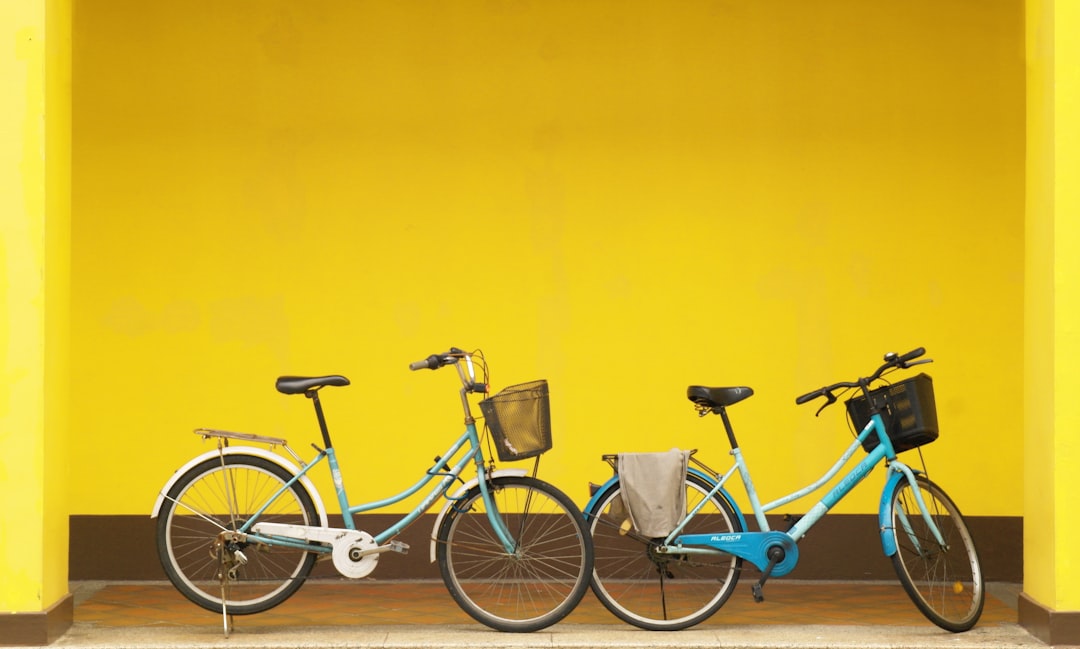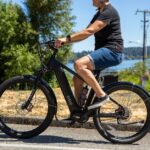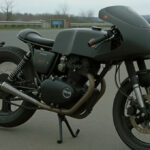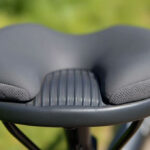Understanding Acoustic Bikes
Acoustic bikes are not just another term for traditional bicycles; they are actually the original pedal-powered machines that have been around for over a century. Here’s a quick snapshot of what set them apart and why they’re called acoustic bikes:
- No Motor: Acoustic bikes rely purely on human power.
- Quiet Operation: The term “acoustic” reflects the natural, silent experience of riding.
- Simplicity: Fewer moving parts mean easier maintenance and longer lifespan.
Comparison with E-Bikes:
- Acoustic Bikes: No motor, entirely pedal-powered, lower cost.
- E-Bikes: Motor-assisted, easier on steep hills, more expensive.
Why “Acoustic” Instead of Just “Bike”?
In the context of today’s tech-savvy world, distinguishing between motor-assisted and traditional bikes has become essential. The term “acoustic bike” sprang up to emphasize the non-electric, pure cycling experience, much like how “acoustic” in music marks a return to simpler, unamplified sounds.

Similar topics to acoustic bikes:
What Are Acoustic Bikes?
Acoustic bikes are traditional bicycles that have been around for over a century. They are the original pedal-powered machines that rely purely on human power to move. Unlike electric bikes, acoustic bikes do not have a motor or battery.
Key Characteristics of Acoustic Bikes
-
No Motor
Acoustic bikes are completely motor-free. This means that every bit of movement comes from your pedaling effort. -
Quiet Operation
The term “acoustic” highlights the natural, silent experience of riding these bikes. There’s no motor noise, just the sound of the wheels on the road. -
Simplicity
With fewer moving parts, acoustic bikes are easier to maintain. They are built to last a lifetime, offering a straightforward, hassle-free riding experience.
Why Use the Term “Acoustic”?
Where electric bikes (e-bikes) are becoming more common, it’s important to distinguish between motor-assisted and traditional bikes. The term “acoustic bike” was coined to emphasize the non-electric, pure cycling experience, much like how “acoustic” in music refers to unamplified sounds.
Examples of Acoustic Bikes
-
Brompton C Line Explore
Known for its compact foldability and reliability, this model is perfect for urban commuting. -
CADEX Tri Frameset
This high-performance bike is designed for triathlons and serious cycling enthusiasts. -
Gazelle Medeo T9 City
A versatile bike that combines comfort and utility, making it ideal for city rides.
Acoustic bikes offer a unique and pure riding experience that many cyclists cherish. They are simple, cost-effective, and provide excellent exercise. Whether you’re commuting, racing, or just enjoying a leisurely ride, acoustic bikes have something to offer everyone.
Next, let’s explore the key differences between acoustic and electric bikes.
Why Are They Called Acoustic Bikes?
The term “acoustic bike” emerged to draw a clear line between traditional, manual bicycles and their electric counterparts. Here’s why:
Acoustic vs Electric
Electric bikes (e-bikes) come with motors and batteries that assist with pedaling. They are designed to make riding easier, especially on hills or long distances. In contrast, acoustic bikes rely solely on human power. This means no motor, no battery, and no pedal-assist. It’s just you, the pedals, and the open road.
Industry Terminology
In the cycling world, terminology matters. As e-bikes gained popularity, cyclists needed a way to differentiate between motor-assisted bikes and traditional ones. The term “acoustic” was borrowed from the music industry, where it describes instruments that produce sound naturally, without electronic amplification. Similarly, acoustic bikes offer a pure, unassisted riding experience.
Manual Bicycles
At their core, acoustic bikes are manual bicycles. This means:
- Human-Powered: Every bit of forward motion comes from your pedaling effort.
- No Electronics: There are no electronic components to worry about—no charging, no software updates, just riding.
- Maintenance: With fewer parts, acoustic bikes are often easier and cheaper to maintain.
Real-Life Context
Zach, the founder of Acoustic Cycles, embodies the essence of acoustic bikes. Growing up in Colorado, he transitioned from a downhill racer to a bicycle mechanic and eventually to building custom acoustic bikes. His passion for these bikes is evident in every handmade creation, designed to last a lifetime and keep up with the rider’s evolving needs.
Next, let’s explore the key differences between acoustic and electric bikes.
Key Differences Between Acoustic and Electric Bikes
When choosing between acoustic bikes and electric bikes, understand the core differences. Let’s break it down:
Motor Presence
Electric bikes (e-bikes) are equipped with a motor and battery. The motor assists with pedaling, making it easier to ride up hills and cover long distances without getting tired. This assistance can be a game-changer for commuters or those with physical limitations.
In contrast, acoustic bikes are purely human-powered. There’s no motor, no battery, and no pedal-assist. Every bit of movement comes from your own effort. This makes acoustic bikes simpler and lighter.
Pedal-Assist
E-bikes come with a feature called pedal-assist. This means the motor kicks in when you start pedaling, giving you a boost. Some e-bikes, like the Brompton Electric, even have a Smart Pedal Assist system that adjusts the level of assistance based on your needs.
On the other hand, acoustic bikes don’t have any form of pedal-assist. Your speed and endurance depend entirely on your own strength and stamina. This can be more physically demanding but also more rewarding for those who enjoy a good workout.
Cost Comparison
When it comes to cost, acoustic bikes generally have the upper hand. They are less expensive because they don’t have the complex electronics and batteries that e-bikes do.
For example, you can get a reliable acoustic bike like the Roam Disc for around $900. In contrast, e-bikes like the Brompton Electric can cost upwards of $3,500 to $7,000. The added cost of e-bikes often includes the price of the motor, battery, and advanced technology like pedal-assist systems.

Maintenance and Upkeep
Acoustic bikes are simpler and have fewer parts, making them easier and cheaper to maintain. There’s no need to worry about battery life, software updates, or motor repairs.
E-bikes, while convenient, require more maintenance. You need to keep the battery charged, update the software, and occasionally service the motor. This can add to the overall cost and complexity of owning an e-bike.
Environmental Impact
Both types of bikes are eco-friendly compared to cars, but acoustic bikes have a smaller carbon footprint. Without the need for batteries and motors, they are more sustainable in the long run.
Understanding these key differences can help you make an informed decision. Next, let’s dig into the benefits of choosing an acoustic bike.
Benefits of Acoustic Bikes
When it comes to acoustic bikes, there are several compelling benefits that make them a great choice for many riders. Let’s explore the key advantages: exercise, simplicity, and cost-effectiveness.
Exercise
Riding an acoustic bike is a fantastic way to stay fit. Since these bikes are entirely human-powered, you’ll be using your own muscles to pedal, which provides a great cardiovascular workout.
- Improves Heart Health: Regular cycling can help reduce the risk of heart disease.
- Builds Muscle Strength: Pedaling works your legs, glutes, and core.
- Burns Calories: Depending on your intensity, you can burn between 400-1000 calories per hour.
Simplicity
One of the biggest advantages of acoustic bikes is their simplicity. These bikes don’t have motors, batteries, or complex electronics. This makes them easier to use and maintain.
- No Charging Needed: You don’t have to worry about keeping a battery charged.
- Less Maintenance: Fewer parts mean fewer things that can break. For example, you won’t need to deal with motor repairs or software updates.
- Lightweight: Without the added weight of a motor and battery, acoustic bikes are generally lighter, making them easier to carry and maneuver.
Cost-Effectiveness
Acoustic bikes are also more affordable compared to their electric counterparts.
- Lower Purchase Price: For example, you can get a reliable acoustic bike for around $900, whereas e-bikes can cost between $3,500 to $7,000.
- Cheaper Maintenance: With fewer parts to worry about, maintenance costs are lower. There’s no need for expensive battery replacements or motor repairs.
Choosing an acoustic bike offers numerous benefits, from enhancing physical fitness to being cost-effective and simple to maintain. Next, let’s take a look at some popular acoustic bike models that might catch your eye.
Popular Acoustic Bike Models
When it comes to acoustic bikes, there are several standout models that offer a blend of quality, performance, and affordability. Let’s take a closer look at three popular options: the Brompton C Line Explore, CADEX Tri frameset, and Gazelle Medeo T9 City.
Brompton C Line Explore
The Brompton C Line Explore is a versatile and compact bike designed for those who want to commute, travel, and run errands in style.
- Price: $1,860.00 (5% off from $1,950.00)
- Features:
- 6-speed gearing system: Offers smooth and controlled riding.
- Powerful brakes: Ensures precision and safety.
- Ergonomic folding system: Folds in 20 seconds, making it easy to carry and store.
- Lightweight frame: Ideal for urban commuting and travel.
This bike is perfect for those who need a reliable and stylish option for everyday use. Whether you’re commuting to work or exploring new places, the Brompton C Line Explore makes every journey a joyful experience.
CADEX Tri Frameset
The CADEX Tri frameset is designed for serious cyclists who demand high performance.
- Price: Custom pricing based on specifications.
- Features:
- Aerodynamic design: Optimized for speed and efficiency.
- Lightweight materials: Made from high-quality carbon fiber.
- Customizable: Custom to fit the unique needs of each rider.
Crafted by Acoustic Cycles, this frameset is perfect for triathletes and competitive cyclists who want a bike that can keep up with their rigorous training and racing schedules. Each bike is custom-built to last a lifetime, reflecting the unique style and taste of its owner.
Gazelle Medeo T9 City
The Gazelle Medeo T9 City is an excellent choice for those who want a reliable and comfortable bike for city riding.
- Price: Around $950.00
- Features:
- Balanced road geometry: Provides a confident and stable ride.
- Innovative D-Fuse seatpost: Reduces road shocks and vibrations for a smoother ride.
- Disc brakes: Offers consistent braking power in all weather conditions.
- Durable components: Designed to handle both smooth roads and rough city streets.
This model is perfect for urban commuters who need a bike that can handle the daily grind while providing a comfortable and enjoyable ride.
These popular acoustic bike models offer a range of features to suit different needs and preferences. Whether you’re looking for a compact commuter, a high-performance racer, or a comfortable city bike, there’s an acoustic option for you. Next, let’s answer some frequently asked questions about acoustic bikes.
Frequently Asked Questions about Acoustic Bikes
Why are they called acoustic bikes?
Acoustic bikes are simply traditional bicycles without any motor. The term “acoustic” differentiates them from electric bikes (e-bikes). Just like acoustic guitars don’t have electronic amplification, acoustic bikes don’t have electric assistance. This terminology helps people quickly understand that these bikes are powered solely by pedaling.
What is an acoustic mountain bike?
An acoustic mountain bike is a traditional mountain bike without a motor. These bikes are built for off-road cycling, featuring durable frames, wide tires, and suspension systems to handle rough terrain. Unlike electric mountain bikes, acoustic versions rely entirely on your pedaling power, offering a more physically demanding and engaging ride.
Are indoor bikes good?
Indoor bikes are excellent for burning calories and improving workout intensity. They provide a controlled environment for consistent exercise, making them great for those who want to stay fit without worrying about weather conditions. Indoor bikes can help you build endurance, strength, and cardiovascular health. They are a convenient option for high-intensity workouts and can be easily adjusted to suit different fitness levels.
Conclusion
At Doot Scoot, we are passionate about promoting eco-friendly transport and enhancing urban mobility. Our focus is on providing valuable information about bicycles, particularly acoustic bikes and e-bikes, to help you make informed decisions.
Acoustic bikes are an excellent choice for those who value simplicity and sustainability. They offer a pure cycling experience, free from the complexities of motors and batteries. Riding an acoustic bike not only gives you a great workout but also reduces your carbon footprint. It’s a win-win for your health and the environment.
Urban mobility is becoming increasingly important as cities grow and traffic congestion worsens. Acoustic bikes offer a fantastic solution for navigating urban areas efficiently. They are easy to park, require minimal maintenance, and can often get you to your destination faster than a car stuck in traffic.
Eco-friendly transport is at the heart of what we do. By choosing an acoustic bike, you are contributing to a cleaner, greener planet. These bikes produce zero emissions, making them an ideal option for environmentally conscious riders.
We invite you to explore our Doot Scoot website to learn more about acoustic bikes, e-bikes, and other sustainable transportation options. Join us in our mission to make urban living more efficient and eco-friendly.
Thank you for reading, and happy riding!











